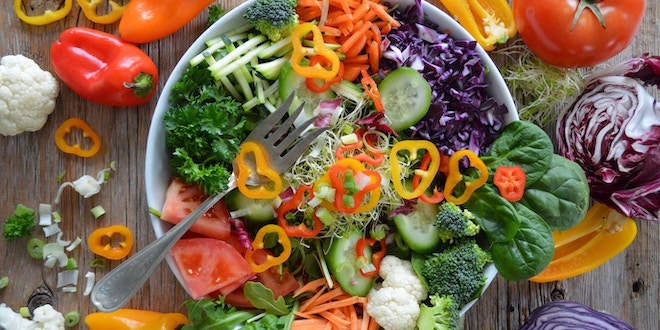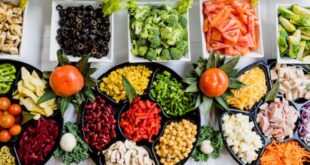Last Updated on October 9, 2023
Eating seasonally may seem like an ancient practice, but it offers immense wisdom and benefits that are extremely relevant in the modern era. Aligning our diets with the natural seasonal availability of produce not only connects us to time-honored culinary traditions but also provides superior nutrition and environmental sustainability. This seasonal eating guide unveils the secrets of harnessing nature’s bounty through each month of the year.
The Culinary Wisdom Behind Seasonal Eating
Throughout history, our ancestors ate according to the seasonal harvests, embracing food at the peak of its freshness and flavor. These practices evolved through keen observation of local climates, farming practices, and food sources. Today, rediscovering this culinary wisdom provides us with foods abundant in nutrients and antioxidants right when we need them the most.
Seasonal produce harvested at peak ripeness contains higher vitamin and mineral content compared to off-season foods transported long distances. This phenomenon occurs because fruits and vegetables naturally synchronize their nutrient production to support our bodies during different seasons. By tapping into these biological cycles and eating produce when they are most nutritious, we can enrich our diets and well-being.
Additionally, adhering to seasonal availability reduces the environmental impact of importing produce over long distances. It also supports local economies by purchasing food grown by nearby farmers. Ultimately, seasonal eating provides the optimal intersection between health, sustainability, and community.
When exploring seasonal eating, look to Kosher grocery stores in Skokie,IL, and farmers markets in your area that offer fresh, local produce. This allows you to experience the peak flavor and nutritional quality of fruits and vegetables harvested in your region.
Here’s a simple bar chart showcasing the data of vitamin C content in seasonal produce:
Source: Sciencedirect.com
A Month-by-Month Guide to Seasonal Eating
Harnessing the rich nutritional palette of seasonal foods, let’s embark on a culinary journey through the seasons to discover the unique delights each month offers.
Winter: Hearty Greens, Roots, and Squash
January brings vibrant citruses like blood oranges, grapefruits, kumquats, and tangerines. These provide vitamin C to combat winter illnesses. Other produce includes beets, parsnips, sweet potatoes, and winter greens like kale, spinach, and Swiss chard. Warm up with roasted roots, hearty braised greens, and citrus-spiked desserts.
February highlights tropical fruits like kiwi, mango, and pineapple along with Brussels sprouts, leeks, turnips, and celery root. Incorporate warmer flavors like ginger, turmeric, and chili peppers. Enjoy fruit-crisp desserts and roasted turnip fries with global spices.
March welcomes the early spring bounty of artichokes, peas, and purple asparagus along with lingering winter produce like cabbage, mushrooms, and rutabaga. Celebrate the equinox with veggie-rich quiches, roasted mushroom risotto, and comforting potato leek soup.
Spring: Leafy Greens, Shoots, and Early Fruits
April brings an abundance of refreshing greens like arugula, baby spinach, dandelion, and lettuce. Fava beans, radishes, and ramps add a peppery flair while rhubarb and strawberries usher in the early fruit harvest. Highlight the crisp flavors with lemon vinaigrettes, herbed omelets, chilled strawberry soup, and rhubarb cobblers.
May highlights artichokes, cherries, and peas alongside colorful carrots, fennel, and watercress. The warmer temperatures are perfect for grilling flavorful veggie kebabs, peas, and prosciutto pasta, or serving a roasted fennel salad. Vibrant cherry chia smoothies and almond cherry galettes welcome the fruit harvest.
June ushers in abundant sunshine, berries, stone fruits, and summer produce. Enjoy apricots, blackberries, blueberries, nectarines, and melons alongside fava beans, summer squash, and zucchini. Grill peach chicken kebabs, blend berry smoothies, and create summer fruit crisps to celebrate the solstice.
Summer: Berries, Stone Fruits, and Fresh Vegetables
July highlights juicy watermelons, plums, peppers, cucumbers, eggplants, and green beans. Stay cool with chilled cucumber salads, grilled veggie platters, and no-bake strawberry cheesecakes. Take advantage of the tomato surplus and enjoy BLT sandwiches, panzanella salads, or tomato basil bruschetta.
August brings a bonanza of apples, figs, grapes, peaches, and tomatoes alongside corn, okra, and zucchini. Pair sweet corn with tomato salads and enjoy peach or grape agua fresca drinks. Bake zucchini bread and harvest veggie tarts to savor late summer’s bounty.
September offers hardy greens, broccoli, cauliflower, eggplant, and winter squash alongside apples, grapes, and pears. Welcome autumn with roasted cauliflower steaks, warm kale salads, and apple honey cake. Hold on to summer with ratatouille, veggie hand pies, and pear ginger crumbles.
Fall: Squashes, Apples, Mushrooms, and More
October highlights hard squashes like acorn, butternut, and spaghetti alongside Brussels sprouts, parsnips, and wild mushrooms. Warm up with roasted root veggie medleys, cream of mushroom soup, and pumpkin maple pancakes. Spice it up with curried squash stew, apple chutney, or a mulled cider sipper.
November brings hardy greens, sweet potatoes, leeks, and celery root alongside late-season pears, persimmons, and pomegranates. Enjoy roasted celery root soup, massaged kale salad with pomegranate, or a Thanksgiving meal highlighting local seasonal produce. Whip up pear ginger galette and persimmon bread puddings for chilly nights.
December offers citrus fruits, pomegranates, quince, dried fruits, and storage vegetables like beets, potatoes, turnips, and winter squash. Infuse holiday cheer with roasted beet and citrus salads, baked apples with dried fruits, quince fruit compote, and spiced squash lasagna.
While the monthly guide unlocks a world of fresh, seasonal delights, the art of preservation allows us to capture and savor these flavors throughout the year…
The Art and Science of Preserving Seasonal Produce
Preserving techniques like freezing, fermenting, canning, drying, and curing have been used for thousands of years to enjoy seasonal harvests all year long. These old-school methods actually lock in more nutrients compared to modern processing.
When fruits and veggies are picked fresh and preserved right away, their peak flavors and vitamins stay locked in. For instance, berries preserved at the height of summer end up tasting way better than store-bought ones in winter. Preserving seasonal bounty also cuts down on waste from big harvests. This allows us to sustainably enjoy the goodness long after the growing season ends.
Getting creative with preserved foods adds seasonal variety to meals all year round. Try quick-pickling radishes or ramps to perk up wintertime dishes. Fermented foods like kimchi, sauerkraut, and kombucha add probiotics. Dried mushrooms and tomato paste pack an umami punch when fresh tomatoes are out of season. At the end of the day, preserving nature’s bounty enables year-round nutrition and honors time-tested food wisdom.
While preserving seasonal produce lets us enjoy it anytime, understanding the unique flavors and qualities of local ingredients also deepens our ties to the foods we preserve and eat…
Seasonal Eating and Its Influence on Health and Wellness
More and more studies show the healthy symbiosis between seasonal, whole foods and our physical health. Produce picked fresh and ripe when harvested locally gives us higher antioxidants, vitamins, and minerals right when our bodies need them most.
For example, the high vitamin C in citrus during cold winter months boosts immunity when we’re vulnerable. And the lycopene and beta carotene abundant in summer’s tomato crops promote skin and eye health when we’re out in the strong sunshine. Eating seasonally helps sync our diets with the preventive nutrients nature provides.
Beyond physical perks, seasonal eating also lifts our mood by connecting us to nature’s cycles. The Japanese practice of “forest bathing” highlights how calming and stress-relieving immersing ourselves in nature can be. Tuning into seasonal shifts through food keeps us tied to the natural cadence even in busy cities.
Finally, timing our meals and choices around seasonal availability counterbalances the energy imbalance from artificial lights, too much screen time, and processed food overloads. Honoring our biological clocks tuned to nature promotes whole-being wellness all year long.
In Conclusion
While modern food systems often obscure nature’s cycles, returning to seasonal eating traditions reconnects us with time-tested nutritional and environmental wisdom. Tapping into the unique harvest times and flavors of local terrain fosters community and allows us to rediscover produce at its freshest and most vibrant. Preserving summer’s fleeting berries and winter’s hardy roots captures their essence year-round. Ultimately seasonal eating synchronizes health with natural rhythms – all while delighting our palates with nature’s seasonal gifts.
As the journey continues, allow your curiosity about obscure summer squashes, heirloom apples, or exotic winter citrus to blossom. Let seasonal eating become not just a temporary diet but rather a lifelong adventure rich in flavor, nutrition, and connection to the rhythms of our world. How will you embrace eating seasonally where you live? Which seasonal favorite will become your next go-to ingredient or recipe? Share your experiences using #EatSeasonal for an opportunity to be featured!
Frequently Asked Questions
What is seasonal eating?
Seasonal eating involves choosing fruits, vegetables, and other produce according to their natural growing seasons in your local climate. It emphasizes eating produce at peak season when nutrients and flavors are most vibrant. Seasonal eating connects us to natural cycles while supporting local economies and sustainable agriculture.
Why is seasonal food so important?
Seasonal food harvested at peak ripeness offers superior freshness, taste, and nutrition. Produce allowed to fully mature in the field contains more antioxidants and phytonutrients that strengthen immunity and prevent disease. In-season produce also supports local food systems, small farmers, and eco-conscious agriculture.
Is eating seasonally really healthier?
Yes, studies consistently show seasonal produce contains higher levels of vitamins, minerals, and protective plant compounds compared to off-season options transported long distances. By providing nutrients timed with natural cycles, seasonal eating prevents deficiencies and enhances the body’s defenses specific to each season.
 Travel for Food Hub The Food Blog for Travel Lovers
Travel for Food Hub The Food Blog for Travel Lovers
















